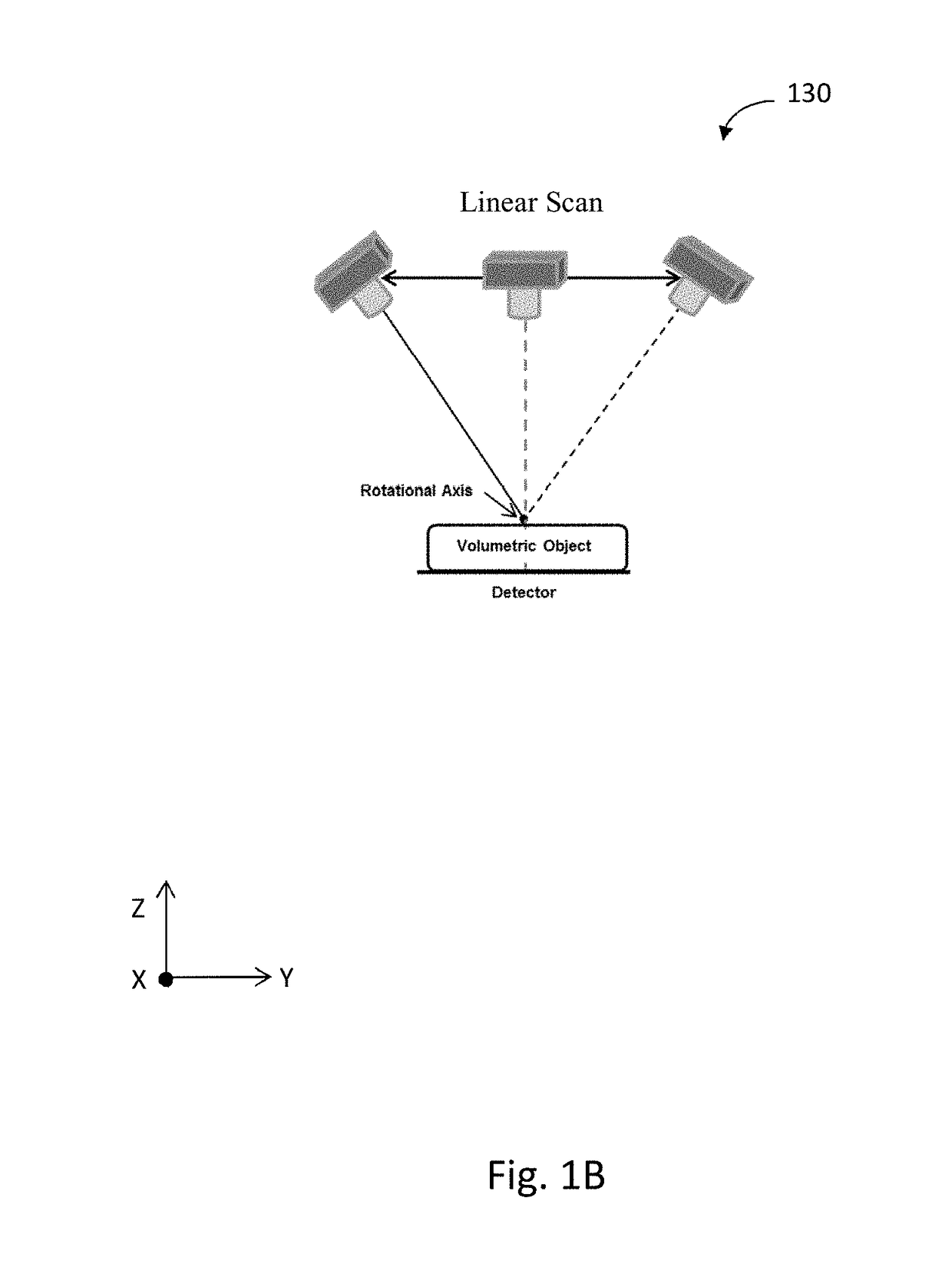Methods, systems, apparatuses, and computer programs for processing tomographic images
a technology of tomographic images and computer programs, applied in the field of tomographic images, can solve the problems of reducing the diagnostic usefulness of projection images, too large for chair-side imaging, and high cost of ownership of machines
- Summary
- Abstract
- Description
- Claims
- Application Information
AI Technical Summary
Benefits of technology
Problems solved by technology
Method used
Image
Examples
Embodiment Construction
[0104]In accordance with example aspects described herein, methods, systems, apparatuses, and computer programs are provided for generating clinical information from a tomographic dataset, and more particularly, for identifying within an intraoral tomosynthesis dataset high-focus images containing features of interest.
[0105]FIG. 1A illustrates a block diagram of an intraoral tomosynthesis system 100 for obtaining an intraoral tomosynthesis dataset, and which is constructed and operated in accordance with at least one example embodiment herein. The system 100 can be operated to obtain one or more x-ray images of an object 50 of interest, which may further include one or more sub-object(s) 52. For example, object 50 may be a tooth (or teeth) and surrounding dentition of a patient, and sub-object(s) 52 may be root structures within the tooth.
[0106]The system 100 includes an x-ray detector 102 and an x-ray subsystem 116, both of which, including subcomponents thereof...
PUM
 Login to View More
Login to View More Abstract
Description
Claims
Application Information
 Login to View More
Login to View More - R&D
- Intellectual Property
- Life Sciences
- Materials
- Tech Scout
- Unparalleled Data Quality
- Higher Quality Content
- 60% Fewer Hallucinations
Browse by: Latest US Patents, China's latest patents, Technical Efficacy Thesaurus, Application Domain, Technology Topic, Popular Technical Reports.
© 2025 PatSnap. All rights reserved.Legal|Privacy policy|Modern Slavery Act Transparency Statement|Sitemap|About US| Contact US: help@patsnap.com



